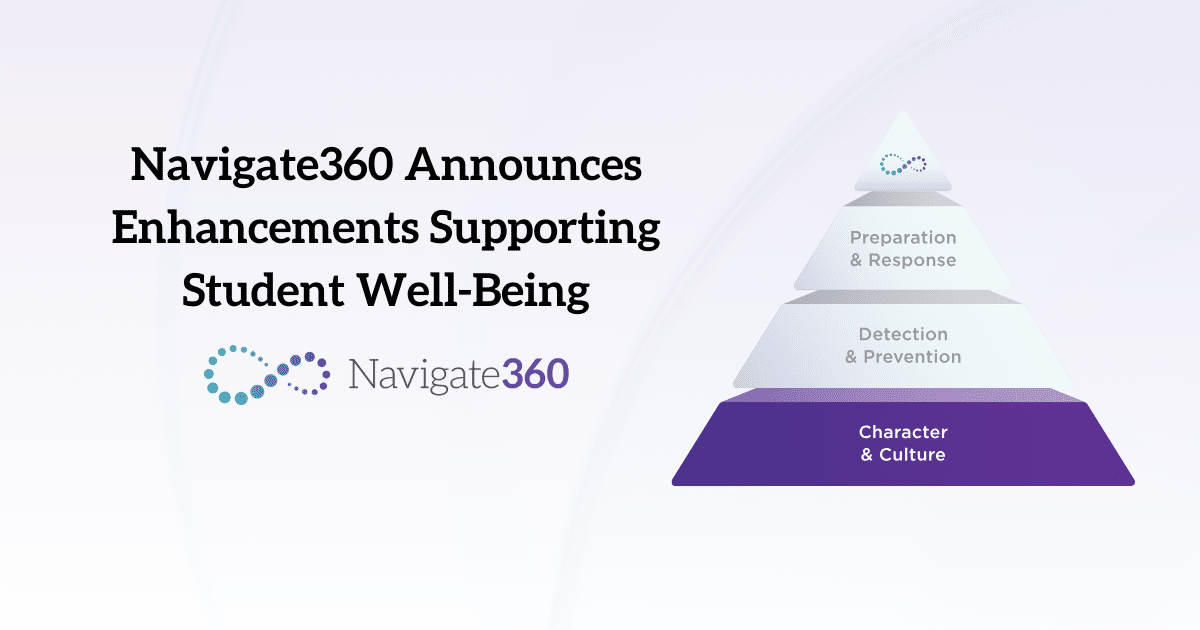Support Students in Crisis
Provide the support your teams need to help students stay on a safe and successful path with suicide prevention training.
While administrators’ and educators’ primary jobs are to teach and guide students, it’s just as important to address mental health struggles and help students form positive self-identities. Suicide prevention training is a necessary component of these efforts and is needed now more than ever. Suicide and suicidal ideation are on the rise among K-12 students and according to the Centers for Disease Control & Prevention (CDC), suicide is the second leading cause of death for adolescents, ages 10-19 Because children in this age range spend so much of their time in school, educators share the responsibility of helping students in their greatest time of need. Unfortunately, many educational leadership programs don’t properly prepare teachers and administrators to help students cope with mental health issues. For this reason, many states have mandated or encouraged suicide prevention training for all school personnel.
What Is the Jason Flatt Act?
The Jason Flatt Act began as an idea from a New Jersey legislator in 2001 who envisioned offering suicide prevention training as part of educators’ in-service training requirements. He brought his ideas to The Jason Foundation, an organization that develops suicide education and awareness programs to address the “silent epidemic” of youth suicide. The Jason Foundation believes that education is the key to prevention.
The Jason Flatt Act was first passed in 2007 in Tennessee and required all educators in the state to complete two hours of youth suicide awareness and prevention training each year in order to be licensed to teach. Dr. Scott Poland, a licensed psychologist and internationally recognized expert on youth suicide, says that states having requirements or mandates for suicide prevention training in schools is a very promising development.
States That Have Suicide Prevention
Almost all states (48 in total) recommend some sort of suicide prevention training place for school personnel. However, there are some differences between how states enforce these trainings. There are states with:
Mandated Annual Suicide Prevention Training
There are currently 17 states that mandate annual suicide prevention training:
- Alabama
- Alaska
- Delaware
- Georgia
- Hawaii
- Idaho
- Iowa
- Kansas
- Louisiana
- Maryland
- Mississippi
- Nebraska
- New Hampshire
- North Carolina
- Rhode Island
- Tennessee
- Texas
This mandate is titled the Jason Flatt Act in Alabama, Alaska, Georgia, Idaho, Kansas, Louisiana, Rhode Island, Tennessee, and Texas.
Mandated Training, Not Annual
22 states plus Washington, D.C. currently mandate suicide prevention training for school personnel but do not specify that the training must be annual:
- Arizona
- Arkansas
- Connecticut
- Washington, D.C.
- Illinois
- Indiana
- Kentucky
- Maine
- Minnesota
- Nevada
- New Jersey
- North Dakota
- Ohio
- Oklahoma
- Pennsylvania
- South Carolina
- South Dakota
- Utah
- Virginia
- Washington
- West Virginia
- Wyoming
In Arkansas, Illinois, Mississippi, North Dakota, Ohio, South Carolina, South Dakota, Texas, Utah, West Virginia, and Wyoming, the law is titled the Jason Flatt Act.
Encouraged Suicide Prevention Training
10 states have laws in place that encourage suicide prevention training for school personnel:
- California
- Colorado
- Florida
- Massachusetts
- Michigan
- Missouri
- Montana
- New York
- Oregon
- Wisconsin
In some states, this means providing access to suicide prevention training as an option for professional development, and in other states, structures are put in place by the legislature to provide for the training, but school personnel are not required to make use of those training options.
Why the Jason Flatt Act Is Important
As stated by Dr. Poland, requirements and mandates are two very different things. “A requirement is really a recommendation, and a mandate [instructs schools] to do things like train [their] staff on suicide prevention, have a plan, [and] have a protocol.” Encouraging or requiring suicide prevention training in schools is certainly a step in the right direction but mandating or passing the Jason Flatt Act means schools in each state will have an obligation to provide suicide prevention training and will have more resources to do that.
With requirements, school personnel may try their best to address signs of mental health issues and suicidal ideation, but it may fall on the backburner or be brushed aside with the abundance of other responsibilities on educators’ plates. While it’s completely understandable for school personnel to feel like they’re not experts on the subject and may make things worse by bringing up the topic of suicide to students, this is precisely the reason why mandatory training is so crucial. By receiving the necessary training as outlined in the Jason Flatts Act, teachers and administrators across your entire district can be better prepared to address students’ mental health conditions.
How You Can Prepare Your School District
As the superintendent of your school district, you have the ability to implement the proper training and programs that provide the resources school personnel need and the support students deserve. You are not expected to be an expert on suicide prevention. However, you can act by taking the right steps towards better educating and equipping your school personnel with the resources to identify warning signs and handle situations related to students’ mental health. Planning is integral to a schoolwide suicide prevention initiative.
It’s also important to have consistency in suicide prevention training throughout your school district, ensuring a student who progresses from elementary to middle to high school receives reliable messaging and processes throughout their schooling. Consistency will help students feel safer and more supported as they navigate their academic and personal lives. The goal is to have both your school personnel and students feel comfortable taking action when signs or feelings of suicide are present.
Navigate360 Is Here to Help
If you’re unsure where to start in implementing a robust suicide awareness and prevention program in your school district, Navigate360 is here to help. We have worked with Dr. Poland and other experts on youth suicide to develop a program that provides training and other resources for school districts. Additionally, you can reference the guide: Expert Insights on Youth Suicide Awareness & Prevention in K-12 Schools. At Navigate360, we offer a comprehensive suite of wellness, preparedness, prevention, intervention, and postvention solutions to help school leaders like you ensure students, administrators, teachers, and staff experience a safe and supportive environment. Contact us today to learn more about our solutions and resources or to schedule a safety demonstration.
If you or someone you know might be at risk of suicide, call the National Suicide Prevention Lifeline at 988, text TALK to 741741 or visit Suicide Prevention Lifeline for additional information.
This page was last updated: August 21, 2023.





